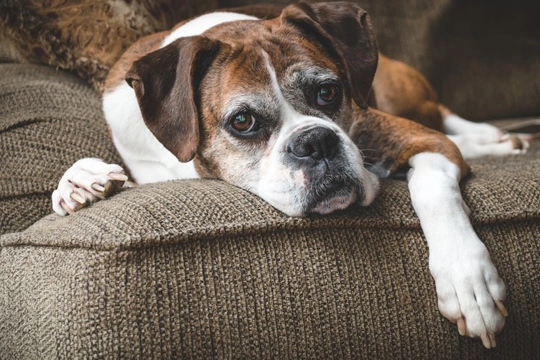
Treating dogs with cancer: the difference between chemotherapy and radiotherapy
If your vet breaks the news to you that your dog has cancer, this can be just as shocking and frightening as learning that any other member of your family has cancer too. Fortunately just as is the case with most human cancers, most of the common cancers that face dogs can be treated or managed, particularly if caught early enough before they spread.
When your vet gives you your dog’s diagnosis, they will likely follow up on this immediately by talking to you about the fine details of the condition, the type of cancer, severity of the malignancy and your dog’s chances of survival and recovery-and they will also talk to you about the various options available for treating the condition too.
Two treatments that are commonly used to treat different types of cancers and send them into remission are chemotherapy and radiotherapy respectively-and these can be used either as a standalone method of treatment, or to accompany surgery to remove tumours.
However, many laypersons are unclear as to the difference between chemotherapy and radiotherapy and their different applications, which can make understanding the different treatment options and how they work somewhat confusing.
While your vet will of course be able to talk you through the whole process and the various options available in order to help you to reach the right decision, it is wise to develop at least a basic understanding of chemotherapy, radiotherapy and how they differ, so that you will be able to make an informed choice.
In this article, we will look at the differences and similarities between radiotherapy and chemotherapy when it comes to treating malignant cancers in dogs, and how they are most commonly used. Read on to learn more.
More about chemotherapy
Chemotherapy is usually administered as a medication, such as in pill format or by IV injection, under the supervision of a veterinarian in their clinic.
Chemotherapy for dogs is usually indicated in cases of aggressive, fast-growing cancers that are not localised, but have instead spread to various different areas of the body. This is because chemotherapy has a systemic effect on the body of the dog, and does not target just one specific zone or area where the cancer is present.
While chemotherapy can in some cases be used to send cancer in the dog into complete remission, dogs are not as responsive to chemotherapy as people are, and generally, radiotherapy is more commonly used if the goal is to eradicate the cancer entirely.
Chemotherapy is therefore most commonly used to put the cancer into remission and so, extend the dog’s lifespan and improve their quality of life. As such, it is often an elective procedure, which means that the owner of the dog in question will have to work with their vet to determine if the cost, trouble and side effects of the treatment are worth it in order to extend the dog’s life if a full recovery is not expected.
Like any medication, chemotherapy can cause side effects in treated dogs, which makes weighing up the pros and cons important-the treatment itself can lead to sickness and nausea in the affected dog, among other things, which all of course make the dog rather frail and miserable. Whilst these symptoms only accompany each treatment and a short time afterwards, it is important that both the dog’s owner and the dog’s vet see the side effects as worth the end result.
More about radiotherapy
Radiotherapy, on the other hand, is usually used to target one or more specific areas of the body, and as such, has more applications that chemotherapy where dogs are concerned. If your dog has just one or two localised malignancies that can be targeted and that stand a good chance of going into remission, radiotherapy is usually the best option.
It can also be used to support surgery where a mass or tumour is removed, but your vet is concerned that the borders of the tumour are not clear and cannot be removed with a safe margin. The radiotherapy can help to combat any remaining cancerous cells either alone or after a surgery, or to shrink a tumour prior to surgery to make removal easier and more likely to be successful.
Radiotherapy in dogs is often highly effective in the treatment of skin tumours and lone localised internal tumours, and it can also make some of the more painful forms of cancer such as bone cancer less painful, which means that it can also help to improve the dog’s quality of life despite their condition.
Radiotherapy, unlike chemotherapy, often needs to be administered at a specialist clinic because it is targeted to treat a certain area of the body by means of a special machine, rather than in pill or injection format.
Exactly how successful either radiotherapy or chemotherapy will be for your own dog will depend on a huge variety of different factors, such as the type of cancer, how aggressive it is, how soon it is diagnosed and how well your dog responds to treatment. Your vet should advise you and keep you informed about your dog’s welfare, health and quality of life as you go along.



